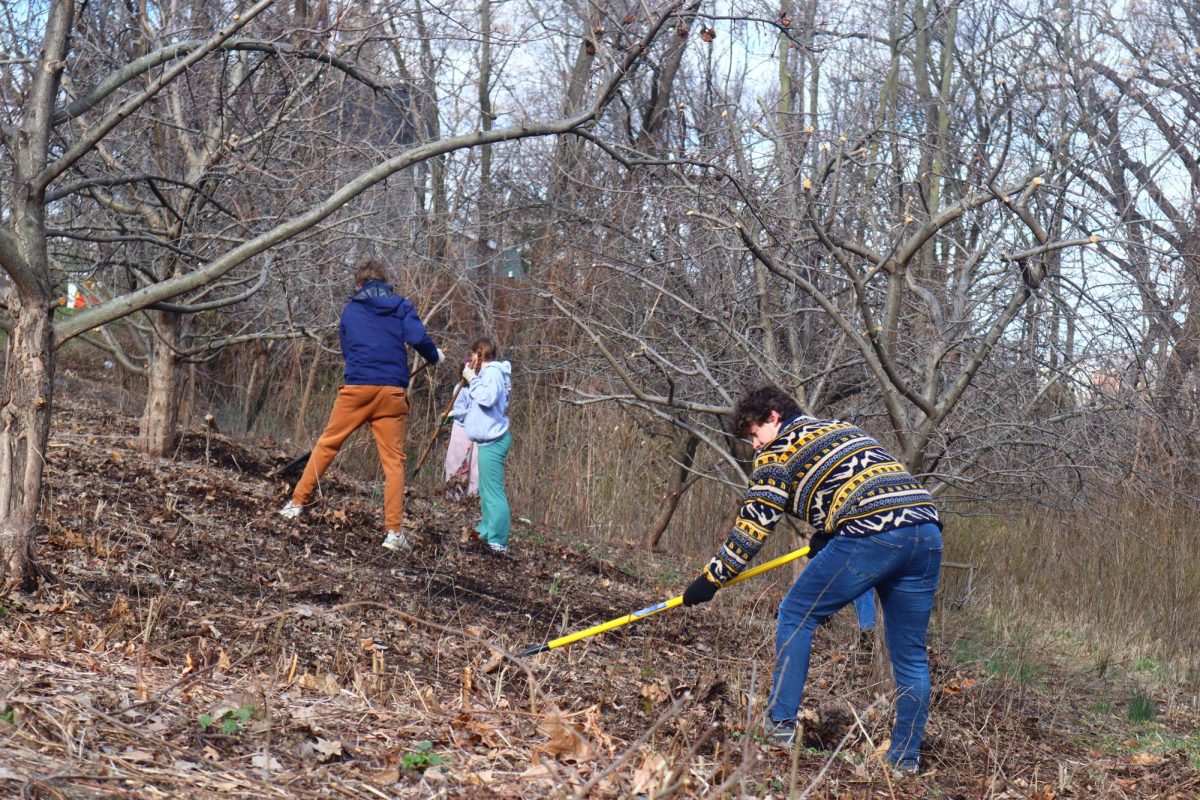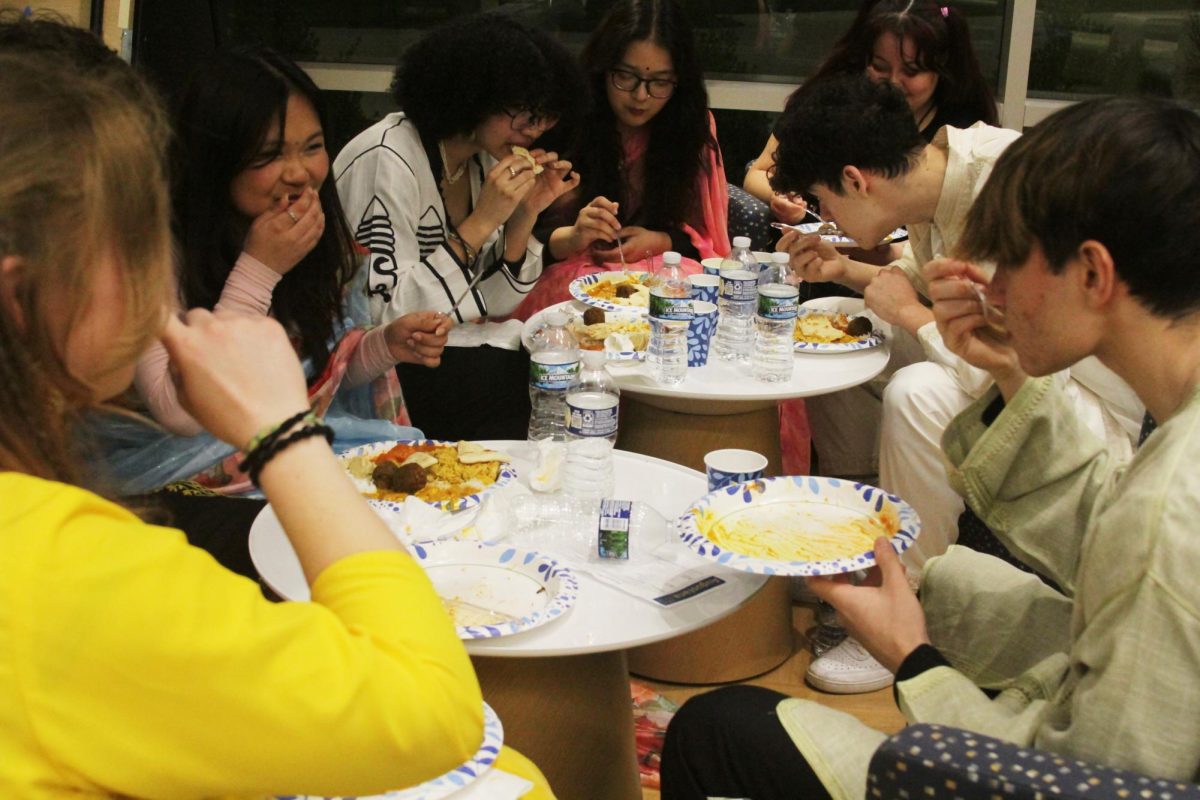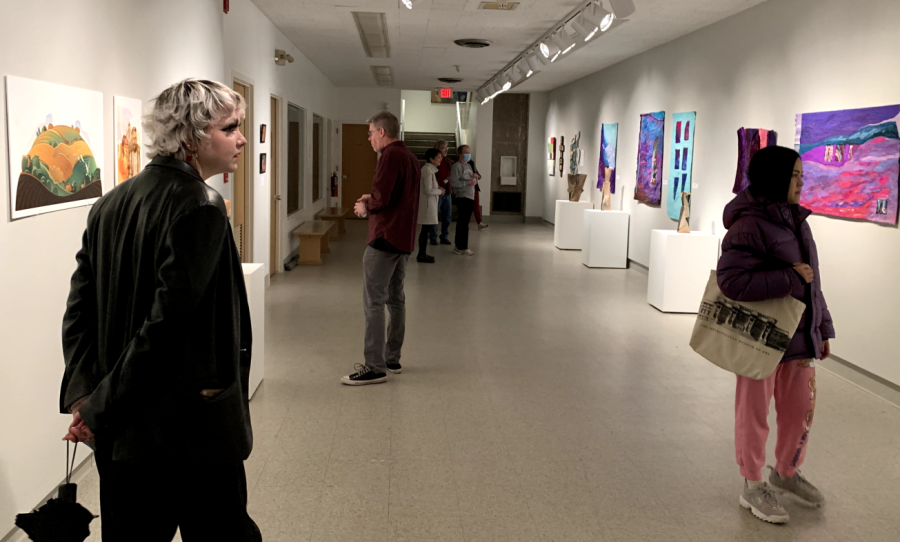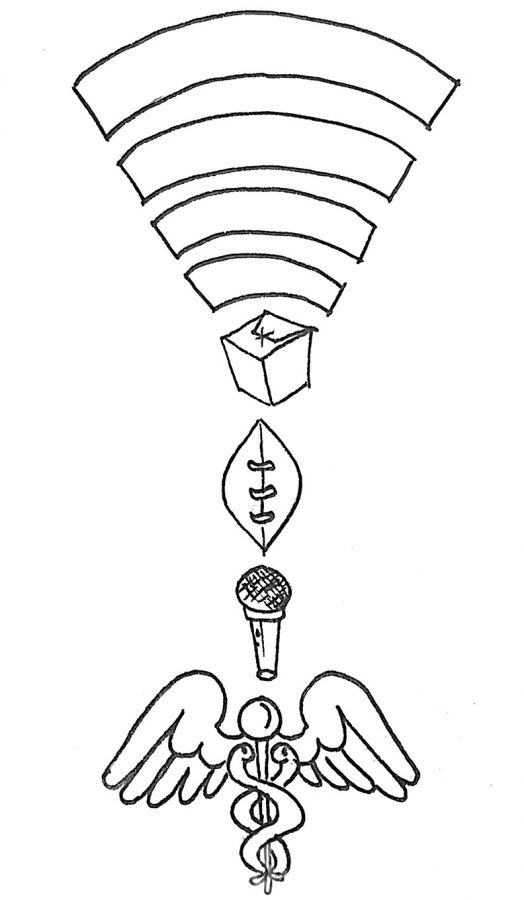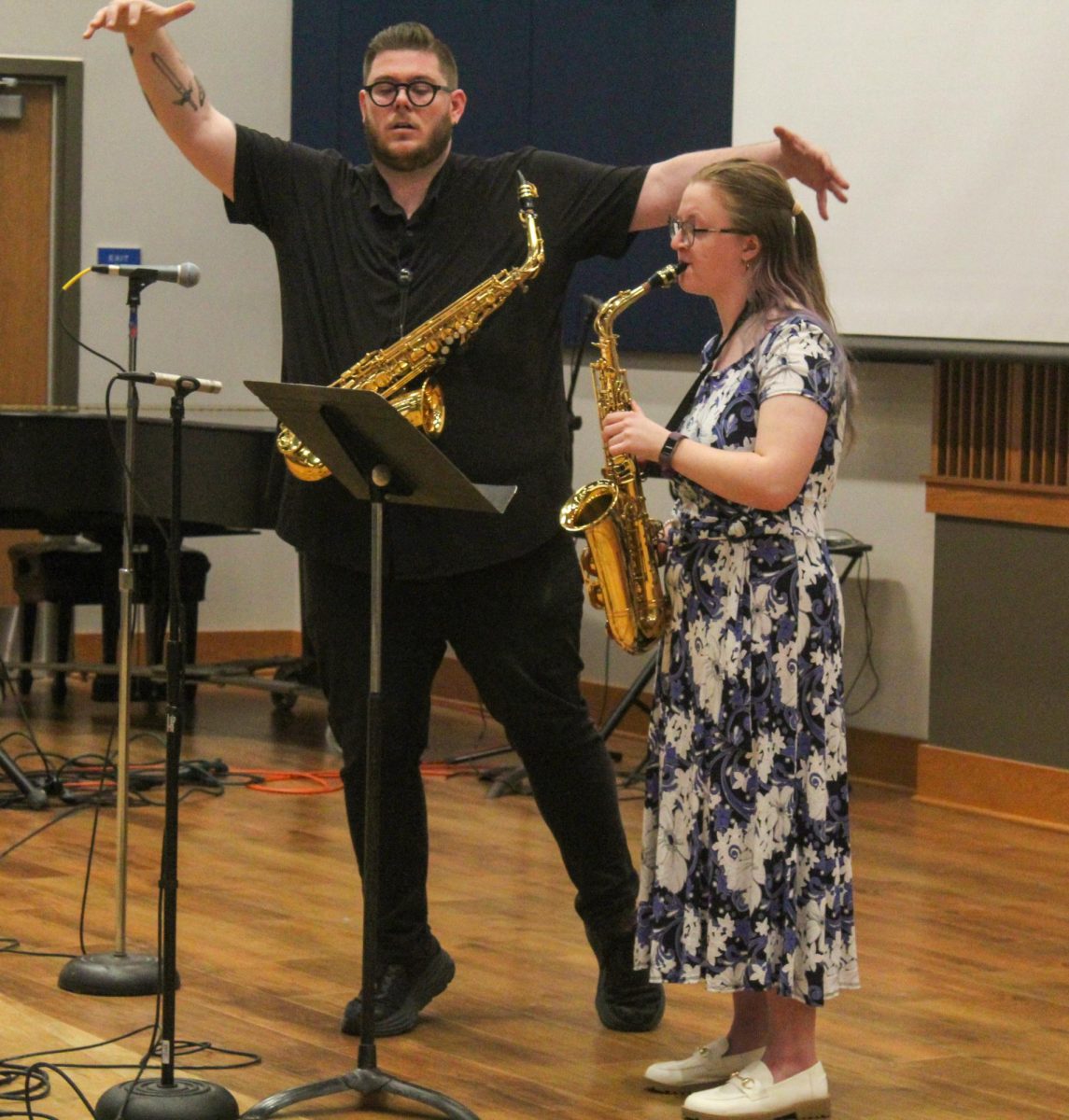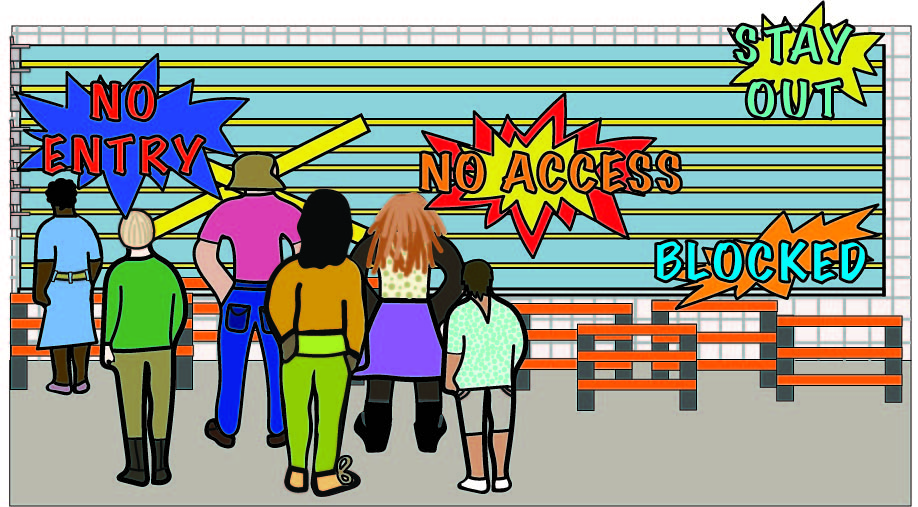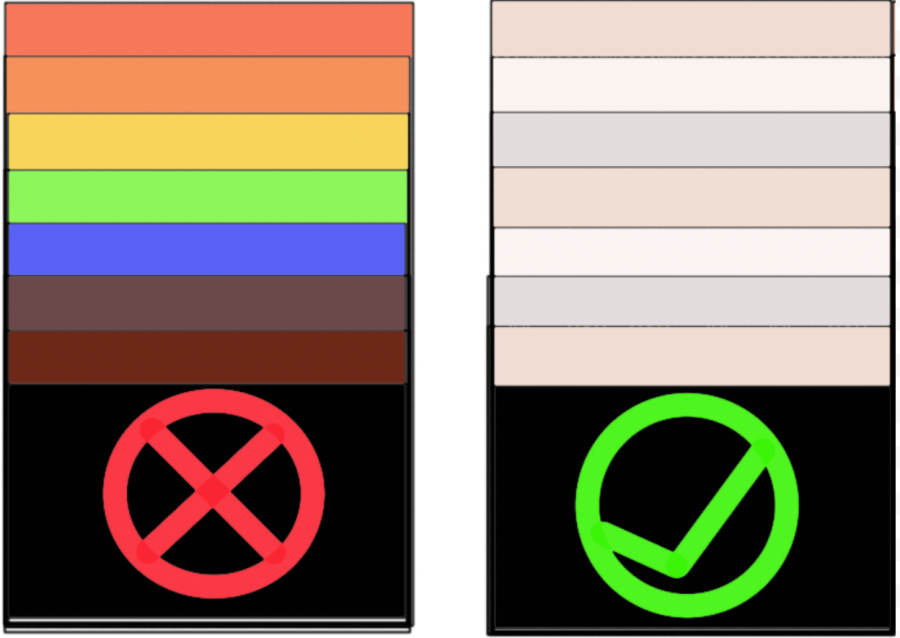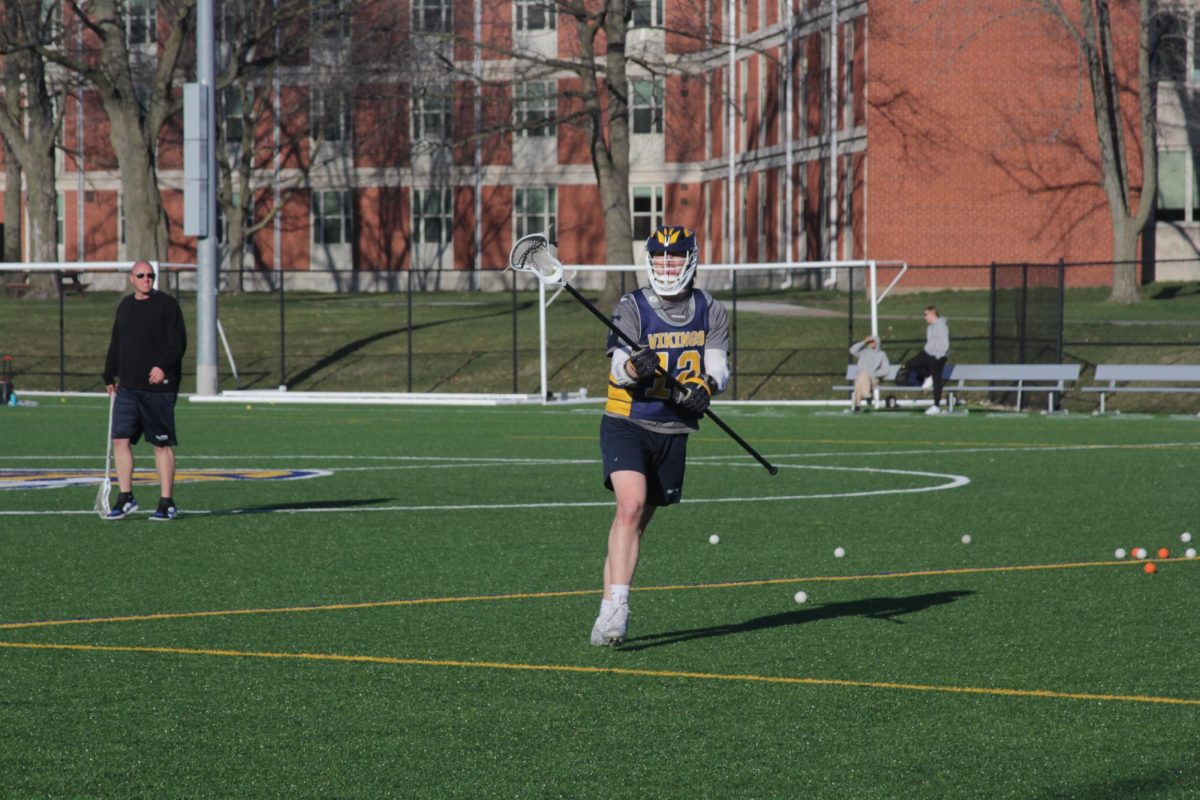Rukmini Girish has taken on a task never completed before. The senior is working to organize and catalog 7,000 glass slides, each containing a piece of Quad City artist and photographer John Hauberg’s work.
Hauberg, born in 1869, was a writer, artist and photographer, widely known for his work capturing the life of Black Hawk Indians. His work has historical and cultural prominence, opening a door into what life was like in the Quad Cities during the 19th century.
“John Hauberg was really a little bit of everything,” Girish said. “He was the son of German immigrants who were some of the first settlers of this area, became a lawyer and then married Susanne Denkmann, (in whose memory) Denkmann Hall was donated to Augie. He was an amateur local historian, an extremely avid photographer and traveled extensively.”
Augustana’s Special Collections has boxes of Hauberg’s work, but it has never been organized, until Girish was asked to do so.
“I don’t know if anyone has actually ever looked at every single glass plate negative and lantern slide that we have in Special Collections, but that’s what I’ve been doing,” Girish said. “That’s quite easy for some of them, but others involve looking at other books that we have in Special Collections to figure out who the people in the photos are and what’s going on.”
Girish said she has to make sure each glass slide is labeled and filed correctly. She said she still has about a dozen boxes to go through, each box holding between 70 and 100 slides.
“Once I’m done with that, I’ll have to use the categories we already have and create some new ones to figure out where each slide is going to fit,” Girish said. “Then, I’ll have to physically organize the slides into those categories and then the biggest task of all: label each one with a number. I’ll also have to create some sort of index or finding aid so that researchers will know what topics the slides cover.”
Girish said the point of her project is to make Hauberg’s work accessible to students and others in the areas who are interested in local history, Native American relationships and Hauberg himself.
“Hauberg is a very important figure in the history of this area and documented a lot of local history,” Girish said. “He took portraits of almost every early settler of the area. He was also close with Black Hawk’s descendants and other Native Americans in the area and has documented some of their history as well.”
Girish is not the first to take a look at the thousands of Hauberg documents. Lendol Calder, professor of history, was hired in 1998 by Special Collections department to assess its Hauberg collection.
He said several projects have come out of the Hauberg collection, including a senior thesis by Sara Eva Carlson in 2002.
“I handed Sara Eva a photograph from the Hauberg collection,” Calder said. “It showed a beautiful home in Davenport’s McClellan Heights neighborhood. The home is still there today and on the print Hauberg had written ‘Indian graves here.’ She set out to explore the puzzle of what Hauberg might have meant and learned that Hillcrest Road in McClellan Heights was built over a cemetery where Indian prisoners from the 1862 Santee Sioux Uprising were buried.”
Calder said Carlson wrote a history of the Uprising and how a group of mostly innocent Santee Sioux came to be imprisoned at Ft. McClellan. She became the first scholar to publish excerpts from letters the Indians wrote home to their families. Her thesis was eventually published as “They Tell Their Story” in the “Annals of Iowa History Journal.”
Calder said Girish’s work organizing the Hauberg collection is important to continue research, such as Carlson’s.
“For me, examining the collection for the first time was like being with James Marshall at Sutter’s Mill, Calif. in 1848,” Calder said. “I felt like I’d discovered a goldmine. It is the sort of collection every historian dreams of coming across and making public.”
“But all this study can’t happen without people being aware of all this information and how to access it,” Girish said. “Plus, the Hauberg collection is one of the biggest we have in Special Collections and my organizing the negatives is one small step to getting the entire thing processed.”
Girish plans to have the entire Hauberg collection organized and catalogued by the end of the year.
Girish catalogues artist's life
October 9, 2014
Leave a Comment
More to Discover













